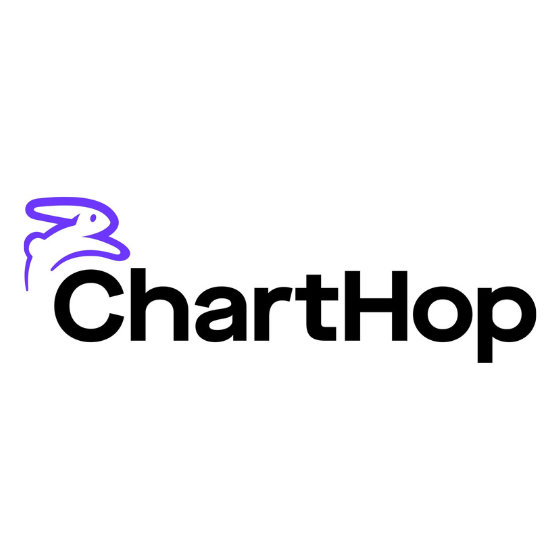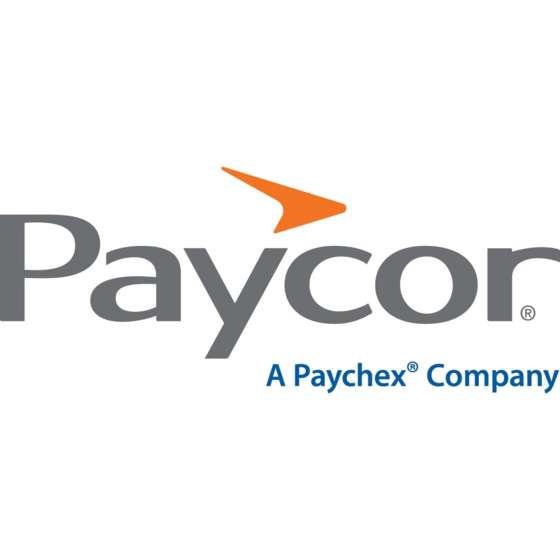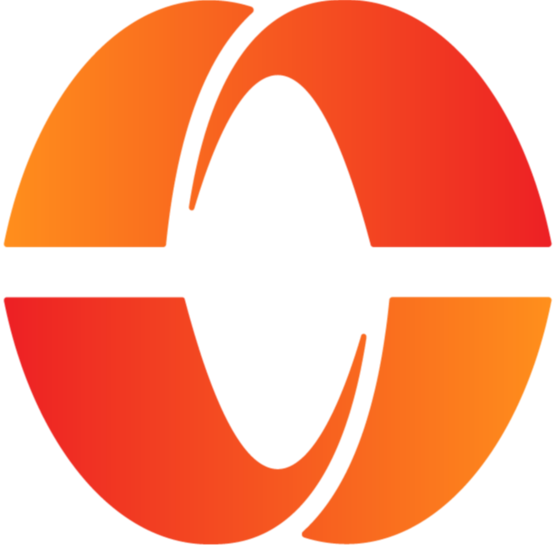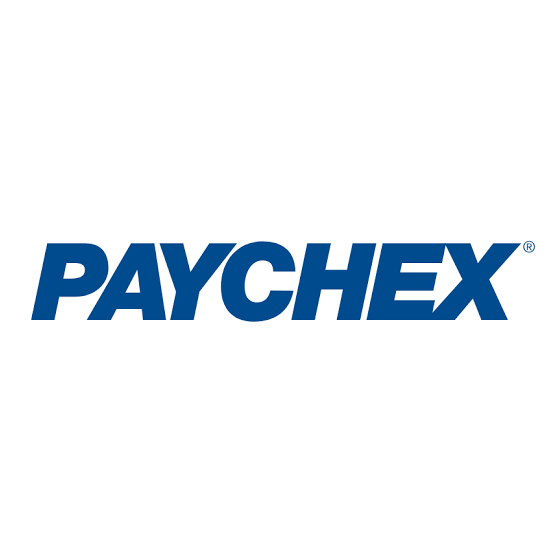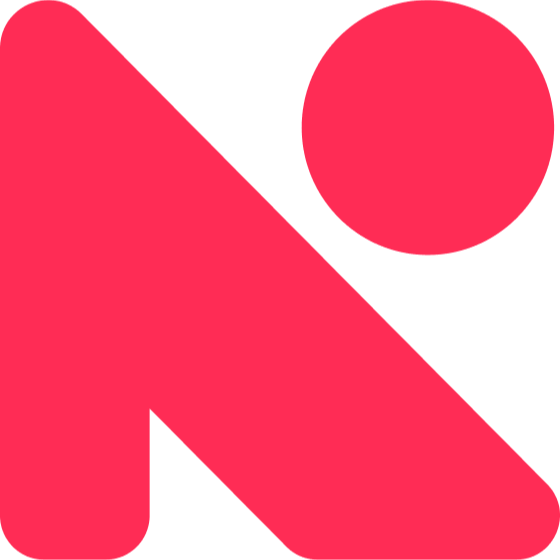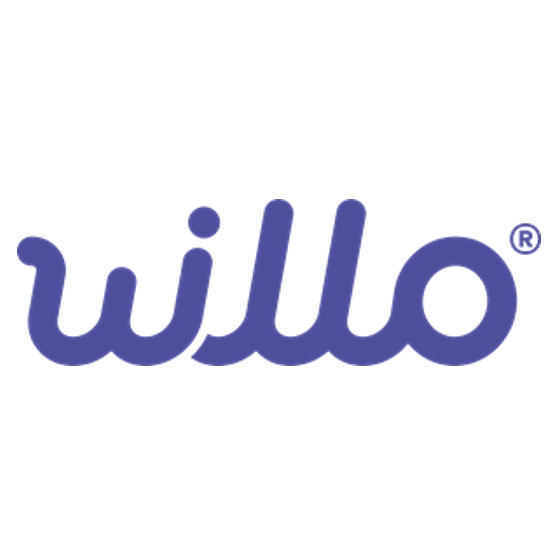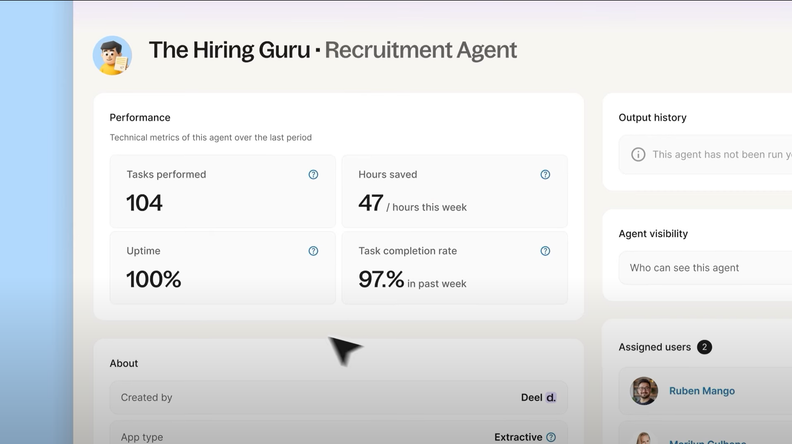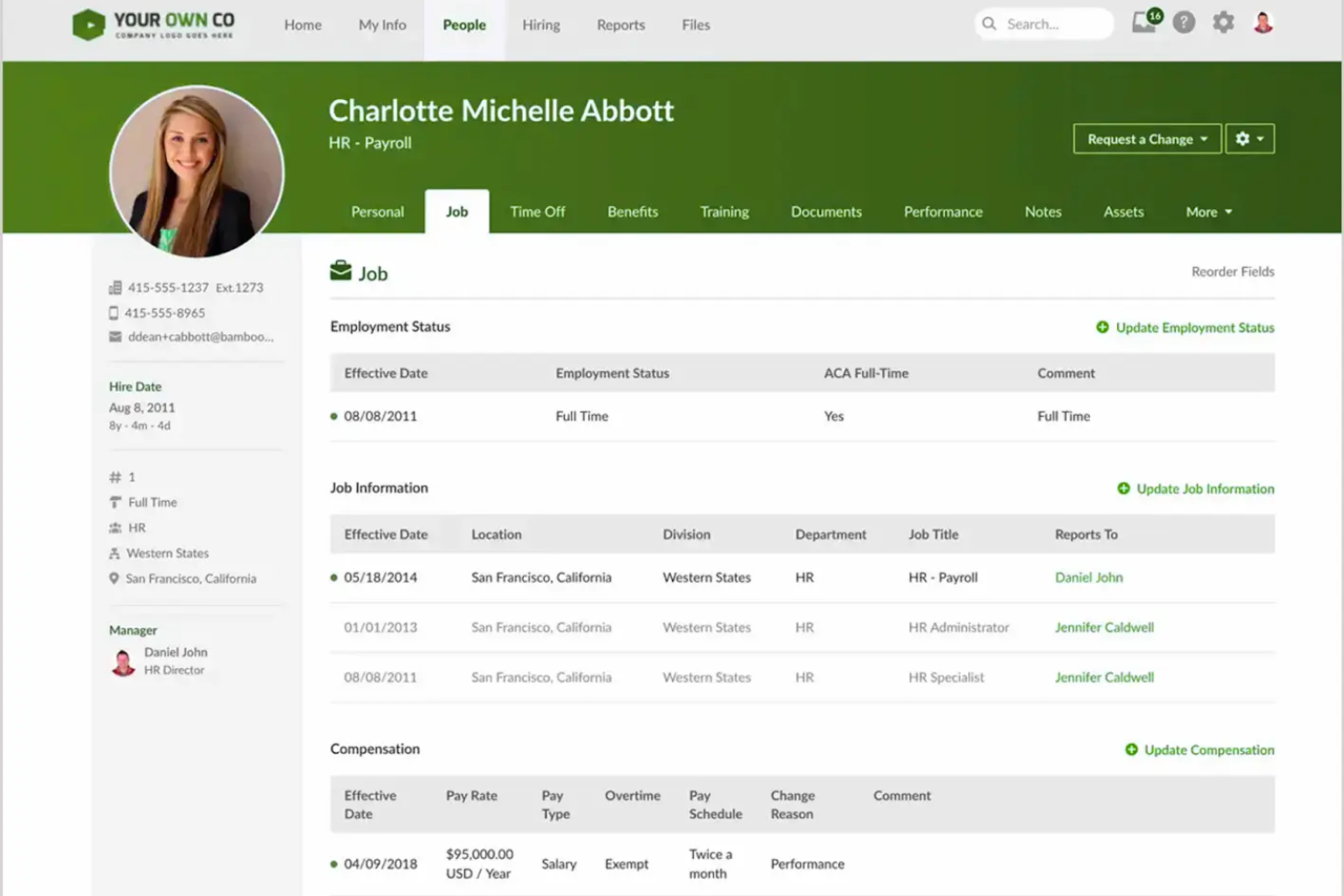10 Best HRIS Systems Shortlist
Here’s my shortlist of the best HRIS systems to streamline your core HR functions, out of the 30 options I reviewed:
An HRIS (Human Resources Information System) is your all-in-one solution for managing employee data, automating repetitive HR tasks like payroll and benefits, and ensuring you stay compliant—no more scattered spreadsheets or disconnected tools. With the right HRIS, you can manage your HR operations efficiently and give your team the control they need through self-service.
When I switched to an HRIS, I saw firsthand how it cut down on manual work, reduced costly errors, and brought everything—performance tracking, training, and compliance—under one roof.
You Can Trust Our HR Software Reviews
We've been testing and reviewing HR software since 2019. As HR professionals ourselves, we know how critical and difficult it is to make the right decision when selecting software.
We invest in deep research to help our audience make better software purchasing decisions. We've tested more than 2,000 tools for different HR use cases and written over 1,000 comprehensive software reviews. Learn how we stay transparent, and take a look at our software review methodology.
Best HRIS Systems: Pricing Comparison Chart
This HR software comparison chart summarizes basic pricing details for my top HRIS software selections to help you find the best software for your budget and business needs.
| Tool | Best For | Trial Info | Price | ||
|---|---|---|---|---|---|
| 1 | Best all-in-one HRIS for international teams | Free trial + demo available | From $29/month | Website | |
| 2 | Best for US and Canadian-based companies | Free demo available | From $8/user/month (billed annually) | Website | |
| 3 | Best HRIS in a comprehensive HR system | 7-day free trial | From $6.19/user/month (billed annually) | Website | |
| 4 | Best for data-driven HR management | Free demo + free plan available | From $8/user/month | Website | |
| 5 | Best for combined payroll and HR | 30-day free trial | Pricing upon request | Website | |
| 6 | Best for HR, payroll, and integrations in one | Free demo available | Pricing upon request | Website | |
| 7 | Best for customizable employee profiles | Free trial available | Starting at $99/month | Website | |
| 8 | Best for global teams in 170+ countries | Free demo available | From $25 - $199/user/month | Website | |
| 9 | Best for eSignature capabilities | 14-day free trial | From $2/user/month | Website | |
| 10 | Best for remote-friendly HR tools | Free demo available | Pricing upon request | Website |
-

Rippling
Visit WebsiteThis is an aggregated rating for this tool including ratings from Crozdesk users and ratings from other sites.4.8 -

Native Teams
Visit WebsiteThis is an aggregated rating for this tool including ratings from Crozdesk users and ratings from other sites.4.9 -

Willo
Visit WebsiteThis is an aggregated rating for this tool including ratings from Crozdesk users and ratings from other sites.4.8
Reviews of the Best HRIS Systems
Below you’ll find brief descriptions of my top 10 HRIS systems list, including the reasons I picked them. To help you in your selection process I’ve explained each system’s best use case and noteworthy features and included a screenshot of each so you can preview their user interface. I’ve also included 20 additional HR systems below to give you a few extra options to consider.
Deel is a global HRIS solution for international teams. It eliminates borders from your talent pool, supporting over 150 countries where you can hire, manage, and pay any contractor or employee.
Why I picked Deel: Their HRIS platform gives you a comprehensive overview of benefits, perks, and salary expenses. You can compare different country costs and see what benefits and withholdings are required. You can set up employees with local health insurance, pension plans, or stipends. Payroll deductions and withholdings are automatically calculated, allowing you to simply schedule a mass payment in one click.
For employees, Deel works as the employer of record, handling full payroll and benefits so you don’t need to open up a foreign entity. Deel’s full-featured user interface gives you features such as contract management, expense reimbursements, and off-cycle adjustments. Their automated onboarding is a great time saver, and the analytics are helpful in keeping track of your HR data.
For contractors, Deel helps you avoid contractor misclassification with legal-reviewed contracts and provides multiple withdrawal options. The platform provides a polished and consistent payment experience, using major payment providers like Wise, PayPal, Payoneer, and Revolut to offer withdrawals in the currency of the contractor’s choice, including cryptocurrency.
Deel Standout Features and Integrations:
Compared to other HRIS offerings, Deel stands out with global payroll, global mobility support, integrated Slack tools, and advanced integrations. Their global mobility service helps companies with visa sponsorship, allowing them to bring in candidates from abroad. The Slack plugins can be used to create an accessible organizational chart, provide self-service PTO management, and even track applicant referrals. They also provide 24/7 client support and live chat. Deel is also fully compliant with SOC2 and ISO 27001 security standards.
Integrations are available with major HR, ATS, and accounting platforms, including Ashby, BambooHR, Expensify, Greenhouse, Hibob, Netsuite, Okta, OneLogin, Quickbooks, SCIM, Xero, Workday, and Workable. In addition, Deel's Open API solution allows developers to build their own connections with the Deel platform as needed.
New Product Updates from Deel
Introducing Deel AI Workforce
Deel has launched the AI Workforce, a set of specialized agents designed to handle repetitive HR, payroll, and compliance tasks with speed and accuracy. These AI agents don’t just assist—they execute tasks from start to finish. For more information, visit Deel's official site.
Rippling is an online HRIS system with features like payroll, time and attendance, learning management, benefits, talent management, PEO, pulse surveys, and workforce analytics. By connecting every business system to one source of truth for employee data, businesses can automate all of the manual work they normally need to do to make employee changes.
Why I picked Rippling: Their software stands out because they built app and device management (basic IT) into their HR platform, which is appropriate for the modern, online, all-digital workforce. You can remotely manage and protect employees’ devices (laptops, smartphones, tablets) as well as easily manage workforce apps like Google Workspace, Slack, and Office 365.
Rippling Standout Features and Integrations:
With robust data collection and custom field capabilities, companies can collect and store any employee information within Rippling. HR teams can then use the data across Rippling to automate access to apps and create policy rules (PTO, overtime, benefits), and more. Rippling can also reflect any organization’s approval processes with advanced approval chains for hiring, terminations, and salary changes.
Rippling’s role-based permission system allows you to automatically give other people—like managers and junior admins—access to specific Rippling services, as well as customers’ third-party apps, based on their department or level. Users can also precisely control what information they can view and change in Rippling—from salary to SSN to device OS. Smart rules allow admins to automatically provision new accounts and policies when employees get promoted or change departments.
Rippling integrates with 500+ apps so instead of entering and managing employee data in 500+ systems, users can enter data in Rippling once and see it updated everywhere. Key integrations include 1Password, Asana, Atlassian, BrightHire, Checkr, Databricks, DocuSign, Dropbox, GitHub, Google Workspace, LinkedIn, Microsoft 365, Netsuite, QuickBooks, Sage Intacct, Slack, Typeform, Zendesk, Zoom, Upwork, and hundreds more.
New Product Updates from Rippling
Rippling Now Integrates with Points North
Rippling's new integration with Points North automates certified payroll reporting, ensuring compliance with Davis-Bacon and prevailing-wage laws by synchronizing data in real time and reducing manual errors. More details at Rippling Blog.
BambooHR is a robust HR management platform with employee data management capabilities alongside hiring and onboarding tools, experience and performance tracking, and payroll and benefits management.
Why I picked BambooHR: This software is a good option for companies seeking a consolidated solution to cover multiple aspects of their HR management. Its employee database acts as your single source of truth for employee data, and syncs up with your other tools to ensure all records are up to date and accurate. Employees also have access to their record, allowing them to update their information as needed.
When it comes to the platform’s other capabilities, it’s super handy to have hiring and onboarding in the same system as employee records. Every time a new employee joins your company, their information is added into your HRIS. You can then track their performance over time in the same system, as well as manage their pay and benefits.
BambooHR Standout Features and Integrations
One standout feature of this software is its employee experience tools. You can track employee engagement levels and sentiments through the software’s surveys and reports, and collect upward feedback to inform your HR initiatives and strategies.
Another great tool is the performance management feature suite. All of your employees’ evaluations and reviews will be stored securely in the same system as their HRIS data and documents. It’s also easy to connect performance tracking with compensation updates, promotions, and raises.
Integrations include Slack, Deel, Lattice, Officevibe, TalentLMS, Bonusly, Lever, Payscale, Papaya Globa, Oyster, and dozens more.
New Product Updates from BambooHR®
BambooHR Carrier Status Bar and Salary Proration Enhancements
BambooHR rolled out two updates to boost efficiency and accuracy. You can now track your carrier connection at a glance and let BambooHR handle salary proration for unpaid time off. Visit BambooHR®'s website for more.
ChartHop is a centralized HRIS that helps you and your team manage people data, performance reviews, compensation, and headcount planning—all in one system. It’s especially useful if you’re looking for robust visualizations and AI-powered analytics to inform decision-making.
Why I Picked ChartHop: I chose ChartHop because it offers an accessible, all-in-one HR platform with deep visual insights. What stood out to me is the flexibility of its headcount planning and compensation review tools, which can support collaborative decision-making across your leadership team. I also liked that ChartHop emphasizes equitable compensation by providing structured workflows to review pay fairly.
Additionally, ChartHop’s AI-driven dashboards and geographic map views allow you to easily spot trends and visualize your team’s global distribution. Its focus on real-time data and customizable profiles make it a strong fit for organizations prioritizing transparent, informed HR processes.
ChartHop Standout Features and Integrations
Features include a unified employee profile system, an interactive org chart, and compensation planning tools that promote pay equity. Its flexible data sheet acts like an advanced spreadsheet for HR data, and AI-powered dashboards offer quick, actionable insights. You can also track key events like birthdays and anniversaries in the unified company calendar and visualize your workforce via geographic maps.
Integrations include ADP, BambooHR, Carta, Dayforce, Deel, Greenhouse, Gusto, HiBob, Justworks, Lever, Paylocity, QuickBooks, Paychex, SAP SuccessFactors, UKG, Workday, and more.
Pros and cons
Pros:
- Supports equitable compensation and headcount planning
- AI-powered dashboards for fast, visual insights
- Detailed employee profiles with role-based permissions
Cons:
- Steep price point of the minimum contract may limit accessibility for small teams
- Advanced features like performance management require additional modules
Paycor is a comprehensive HRIS (Human Resources Information System). It's a cloud-based platform that offers solutions for managing and optimizing the employee lifecycle. From recruitment and onboarding to benefits administration, payroll, and time tracking, Paycor has got it all covered. It's designed for small to medium-sized businesses, but I've found it to be pretty scalable, so it could work for larger organizations too.
Why I picked Paycor: Paycor is user-friendly and has a wide range of features. It's got a clean, intuitive interface that's easy to navigate, even if you're not particularly tech-savvy. Plus, it offers plenty of features that make managing HR tasks a whole lot easier.
With Paycor, you can post job openings, track applicants, and even onboard new hires, all from the same platform. The payroll system is also easy to use. And it includes tax filing, which is a huge time-saver.
Paycor Standout Features and Integrations:
Standout features include its pay-on-demand feature, which allows employees to access their earned wages before their next official payday. It's also convenient that expense management, scheduling and time tracking, and employee experience monitoring are all also available in the platform.
Integrations include several other tools for wage and salary verification, expense management, employee wellness, certified payroll, and FMLA. Key software systems to note include Certify, ESR, Payfactors, and WageWorks.
Paylocity is an HR and payroll software provider that helps midsize businesses scale, manage their workforce, and automate key tasks.
Why I picked Paylocity: You can track employee details, create organizational charts, and manage documents in one place. The platform also helps with compliance, allowing you to stay on top of changing regulations with features like automated alerts and reporting.
I also like Paylocity's self-service functionality that improves the experience for employees and managers. Employees can easily access their own data, update information, and even submit requests without going through HR, while managers can track performance, review goals, and monitor team progress. Additionally, Paylocity offers extensive integration capabilities, making it easy to connect with over 400 third-party tools across recruitment, productivity, communication, and benefits management.
Paylocity Standout Features and Integrations:
Standout features include tools for payroll, benefits management, time tracking, and learning management. The payroll feature ensures accurate payments, while benefits management makes it easier to enroll in and administer employee benefits. Time tracking is also built in, letting your team clock in and out via mobile or desktop.
Integrations include ClearStar, Microsoft Dynamics 365, 7shifts, AirMason, APA Benefits, Azure, Atlassian, Asana, Box, ClearCompany, Dropbox, Freshdesk, Google Workspace, Greenhouse, HubSpot, Slack, Salesforce, Trakstar, and Zoho People.
Workable HR is an HRIS platform that helps businesses organize their onboarding initiatives as well as their employee information management processes, from documentation to organizational structures.
Why I picked Workable HR: Workable HR allows organizations to securely manage employee information through a configurable HRIS platform. This customization extends to various aspects of employee management, enabling companies to tailor profiles to meet specific organizational needs. For example, users can collect different pieces of information for different locations or departments and avoid unnecessary or irrelevant documentation to help speed up the onboarding process.
Workable's onboarding module also offers a user-friendly HRIS portal for new hires, complete with customizable templates and dashboards for HR teams. This functionality enhances document management, signature collection, and onboarding workflows, ensuring a smooth and positive experience for new employees.
Workable HR Standout Features and Integrations:
Standout features include an employee directory for centralized information, time-off management, and organizational structuring features. It also integrates with its recruiting suite, which features an applicant tracking system (ATS) and automation capabilities.
Integrations include ADP, Xero, BambooHR, Greenhouse, Lever, Namely, Rippling, Sapling, and Zenefits.
Remofirst is an HRIS platform that specializes in managing global teams in 170+ countries. It provides a comprehensive suite of tools including global employer of record services, international payroll and invoice management, benefits management, and compliance support. This makes it an ideal solution for businesses seeking to hire and manage employees across different countries.
Why I picked Remofirst: I selected it due to its comprehensive feature set that caters to the needs of modern, global businesses. It offers functionalities such as employee self-service, payroll entry, and expense reimbursement, which are essential for efficient HR management. What sets Remofirst apart is its focus on global payroll and compliance.
The platform is recognized for its user-friendly onboarding process, personalized customer support, competitive pricing, and transparency. It is trusted by a wide range of companies, from startups to Fortune 500 corporations, and is a reliable choice for businesses aiming to expand their workforce globally.
Remofirst Standout Features & Integrations
Features include the deployment of international benefits to your team. The platform makes it easy for you to setup payroll and benefits in one go. These can include premium health insurance, equipment, and financial benefits. I also like that a dedicated team of legal experts and HR professionals takes care of compliance matters. They meticulously monitor the local laws applicable to each employee to stay updated on regulations and ensure non-compliance is avoided.
Integrations include ADP.
Agendrix is a versatile employee scheduling software designed with the needs of small businesses and shift workers in mind. It offers a range of tools to help you create and manage your team's work schedules, ensuring everyone is on the same page.
Why I Picked Agendrix: I picked Agendrix because of its strong focus on HR management functionalities. With features like employee onboarding and HR records management, it allows you to keep all employee-related information organized and easily accessible. This can greatly improve how you manage HR tasks, leading to a more streamlined workflow. Additionally, the document management and eSignature capabilities make it easier for you to handle paperwork and approvals without the hassle of manual processes.
Another reason Agendrix stands out as an HRIS is its time and attendance tracking feature. It offers automated timesheets and payroll exports, which means you can track employee hours accurately and ensure payroll is processed correctly. This feature reduces the risk of errors and saves you time, which you can then spend on other important tasks.
Agendrix Standout Features and Integrations
Standout features include multiple clocking methods such as punch clock kiosks and geolocated clocks, which provide flexibility in how employees clock in and out. The professional messaging and news feed features help improve communication within your team, ensuring everyone stays informed and connected.
Mobile apps for iOS and Android allow both managers and employees to access schedules and features on the go, adding convenience and accessibility to your workflow.
Integrations include EmployerD, Nethris, Sage 50, Acomba, QuickBooks, Ceridian Powerpay, ADP Workforce Now, Payworks, Lightspeed, Azur, Easypay, BeLocum, Hopem, and Folks HR.
Paychex Flex is a comprehensive payroll and HR solution that caters to businesses of all sizes, with over 730,000 businesses utilizing its services. The platform offers a range of features including payroll processing, tax payment automation, HR and benefits integration, employee management, and dedicated HR support.
Why I Picked Paychex Flex: Paychex Flex allows businesses to create customized workforce management solutions. This is particularly useful for companies with hybrid work environments, where employees work both in-office and remotely. The system can accommodate complex scheduling needs, optimizing employee time and ensuring seamless coordination between on-site and remote workers. This flexibility in managing diverse work setups is a unique feature not commonly found in other payroll and HR solutions.
Paychex Flex provides businesses with access to a team of compliance experts who stay up-to-date with the latest labor laws and tax regulations. This specialized support ensures that businesses remain compliant with federal, state, and local regulations, reducing the risk of legal issues and penalties. The system also offers real-time compliance alerts and updates, allowing businesses to adapt swiftly to changing regulations, a feature that gives Paychex Flex a distinct edge in the market.
Paychex Flex Standout Features and Integrations:
Features include integrated financial wellness programs for employees. These programs include resources for financial planning, budgeting, and investment guidance. By providing employees with tools to manage their finances effectively, businesses can contribute to their employees' overall well-being and job satisfaction. This feature is unusual in the payroll and HR industry and showcases Paychex Flex's commitment to not only streamline HR processes but also to enhance the overall quality of work life for employees.
Integrations are available with 300+ commonly used applications, including BambooHR, Epicor, Infor, JazzHR, Microsoft Azure, Microsoft Dynamics, Sage, SAP, and many others. Plus, Paychex Flex has an API to support any custom software integrations you may need.
Other HRIS Software
Here are a few more options that didn’t make the top HRIS systems list. If you need additional suggestions for managing your HR tasks, check these out:
- Trinet
For customer support and HR consulting
- Sloneek
For performance and goal tracking
- GoCo
For user-friendly onboarding
- IntelliHR
For performance and people analytics
- Oracle HCM Cloud
For handling the entire employee lifecycle
- FoxHire
For payroll and benefits
- Factorial
For small businesses
- Kallidus Sapling
For a distributed workforce
- Sage HR
For supporting the employee lifecycle
- Workday
For multi-jurisdiction support
- PrimePay
For small and mid-sized organizations
- SAP SuccessFactors
For aligning HR data with business outcomes
- bob
For employee engagement
- Arcoro
For construction companies
- Insperity
For payroll, benefits, and performance
- Built For Teams
For quick onboarding
- Dayforce HCM
For daily operations and long-term planning
- Lattice
For centralized US employee data
- monday.com
For custom HR workflows
- Justworks
For 24/7 HR expert support
Related HR Software Reviews
If you still haven't found what you're looking for here, check out these other related tools that we've tested and evaluated:
- HR Software
- Payroll Software
- Employer of Record Services
- Applicant Tracking Systems
- Workforce Management Software
Selection Criteria for Human Resource Information Systems
Selecting the right HRIS requires a thorough understanding of how this software can alleviate common pain points within HR administration. My approach to choosing the best HRIS for this list is grounded in my 9 years of experience maintaining an HRIS system, which allowed me to pinpoint the features that will truly save time and make your processes more efficient.
I started my selection process by reviewing recent HRIS market data to create a long list of popular HRIS software systems. Next, I dug into each system using the selection criteria below to further hone my selections and assess the depth of their key features. If you're considering an internal HR system that's not on my list, I recommend using these criteria in your own evaluation process too.
Core HRIS Functionalities (25% of total score): To be considered for inclusion in my list of the best HRIS, the solution had to fulfill these common use cases first:
- Digital management of employee records
- Streamlined payroll and benefits enrollment modules or integrations
- Tools for recruiting & talent acquisition (e.g., an applicant tracking system)
- Employee onboarding and offboarding workflows
- Tools to enhance performance management and employee development
- A suite of tools to track employee work hours, time-off requests (including paid time-off accruals), and other leaves of absence
- An employee self-service portal to cut down on administrative requests on your HR professionals
- Integrated compliance monitoring features to monitor regulatory requirements
Additional Standout Features (25% of total score): To help me narrow in on the best HRIS out of the numerous options available, I also took note of any unique features, including:
- Unique customization options, including data dashboards, custom workflows, and company branding abilities
- Advanced features that address talent management, employee retention, and performance reviews
- Advanced reporting and analytics capabilities that provide deeper insights beyond basic HR functions
- Innovative use of AI and machine learning for predictive analytics and automation
- Advanced integrations with payroll solutions (if not part of the HRIS already), single sign-on applications, and work operating systems (i.e., Microsoft 365 and Google Workspace)
Usability (10% of total score): To evaluate the usability of each HRIS, I considered the following:
- An intuitive design and user interface, with a minimal learning curve to master
- Clear and concise on-screen instructions and tips to improve ease of use and create a positive user experience
- A user-friendly mobile experience or dedicated mobile apps for Android and iOS mobile devices to support remote and on-the-go HR management
- Role-based access controls that are straightforward to configure
Onboarding (10% of total score): To get a sense of each software provider's customer onboarding process, I considered the following factors:
- A streamlined setup process and clear configuration guidelines
- The availability of HRIS systems training materials such as videos or interactive tutorials
- The availability of live support or chatbots for real-time assistance during setup
- Customizable templates to speed up the onboarding process
- Support for migrating historical HRIS data into the new platform
Customer Support (10% of total score): To evaluate the level of customer support each vendor offered, I considered the following:
- The availability of multiple support channels, including email, phone, and chat
- Whether a dedicated account manager is provided for personalized support
- The existence of a self-service knowledge base, an FAQ repository, or other self-help resources to speed up troubleshooting
- The overall quality, responsiveness, and helpfulness of the support team during customer onboarding and post-purchase, as inferred from customer reviews
Value for Price (10% of total score): To gauge the value of each software, I considered the following factors:
- The availability of free trials or demos to test the software before purchasing
- Competitive and transparent pricing models that reflect the software's feature depth and explain which features are included at each level
- Tiered pricing plans that cater to different business sizes, from small to medium-sized businesses (SMBs) up to enterprise-level organizations
- A clearly demonstrated positive ROI through efficiency gains and cost savings
Customer Reviews (10% of total score): Evaluating customer reviews is the final element of my selection process, which helps me understand how well a product performs in the hands of real users. Here are the factors I considered:
- Whether a product has consistently high ratings across multiple review platforms, indicating a broad level of user satisfaction
- Specific praises, criticisms, or trends in customer feedback that indicate the software's strengths or areas for improvement
- Whether customer feedback specifically mentions issues with ease of use, customer support responsiveness, or lacking features
- Any testimonials that highlight significant improvements in HR processes or employee management capabilities
Using this assessment framework helped me identify the HRIS that goes beyond basic requirements to offer additional value through unique features, intuitive usability, smooth onboarding, effective support, and overall value for price.
How to Choose HRIS Software
An HRIS can help you streamline all your core HR functions into one system, for maximum efficiency. To help you choose the best HRIS for your needs, you need to pinpoint your key users and document their specific challenges first.
When choosing an HRIS, budget and functionality are top considerations. Ensure the platform supports essential features like reporting, data customization, and user-friendly design.
As you work through your own unique software selection process, keep the following points in mind:
- What problem are you trying to solve? Start by identifying the challenges you're trying to overcome. This will help you clarify the features and functionality the HRIS needs to provide. These challenges may include:
- Digitizing all your HR data to eliminate paper filing and reduce data entry errors,
- Improving workflows for key processes such as payroll, benefit management, or performance tracking,
- Empowering employees to self-service and manage their own data, or
- Gaining more advanced analytical tools and reports to support data-driven HR decision-making.
- Who will be your main users? Consider who will use the software and how many licenses you'll need. Once that's clear, it's also useful to rank the needs of your different users to identify the key priorities for your power users, managers, and employees, to ensure they're all met.
- For an HRIS software solution, you'll need employee-level access for your entire workforce, plus special access for your HR administrators, payroll administrators, and managers.
- What is your budget? To evaluate cost, do a headcount of your existing workforce, plus your projections for the next 5 to 10 years. Since most HRIS software charges a monthly fee per employee, this will help you proactively estimate your monthly costs.
- It's crucial to determine a realistic budget for your new HRIS system up-front, so you don't waste time considering software that's out of your price range.
- What outcomes are important? Review the capabilities you want to gain or improve, and how you will measure success. Being clear on your desired outcomes upfront is crucial to avoid wasting valuable time. Key outcomes you may want to measure include:
- Reduced administrative demands on your HR staff as a result of enhanced employee self-service capabilities,
- The elimination of paper-based or Excel-based tracking processes following full digitization, or
- Enhanced workforce analytics that are accessible and updated in real time.
- Do you require specific software integrations? Clarify whether your new HRIS software will replace existing tools, or need to integrate with them. Key systems to integrate with include payroll software, training management software, and single sign-on applications.
- Can you reduce your monthly HRIS SaaS costs by replacing multiple tools with an all-in-one HRIS application?
- Are all the integrations you need available, or can they be custom-configured using an API?
- Does the HRIS system satisfy your technical requirements? Consider the software selection alongside your existing workflows and systems. Evaluate what's working well, and any problem areas that need to be addressed.
- Does the new system integrate with your corporate workspace (Microsoft SharePoint, Google Workspace, etc.)?
- Does the new system offer security features that meet your needs (e.g., two-factor authentication (2FA), etc.)?
Remember, every business is different — don’t assume that an HRIS system will work for your organization just because it's popular.
How to Implement HRIS Software
Once you've chosen the winning HRIS system for your needs, you'll need to develop an implementation plan to integrate the software into your organization's existing processes and train your employees on how to use it.
HRIS implementation is a journey. Take it one step at a time, document every decision, and ensure your team can dedicate the focus it needs to succeed.
Key elements you'll need to incorporate into your implementation plan include:
- Developing an implementation strategy and timeline
- Facilitating stakeholder engagement
- Creating a communication plan and those responsible for managing it
- Developing a phased-in approach to make the roll-out more manageable
- Initiating internal training and support processes
- Promoting user adoption internally (this helps to win over employees who may be resistant to change)
- Prepare, clean, and eventually migrate your data
- Conduct test runs of key processes (e.g., several payroll run tests, or running a fake performance review cycle)
- Celebrate the launch and stay on top of questions, concerns, and system upkeep
For tips on this, our ultimate guide on HR software implementation is what you should read next. Plus, it also includes a handy HRIS implementation checklist!
It's also crucial to form an implementation team that represents all your key stakeholders and user groups for your new HRIS software.
"During implementation, engage with other areas of the business, and don’t feel that you need to do it all on your own," says Mike Kealey, Managing Director at Vero HR. "Understand their needs early, involving them from the start to get them on board, and identify any ‘quick wins’ such as a useful report for your finance team or an informative, high-level dashboard for the CEO."
You also don't want to over-complicate your implementation process, as that can lead to frustration.
Andrew Swiler, the CEO of the HR software company Lanteria, comments that, "Often, I observe people complaining about implementation while simultaneously complicating their processes by aiming for overly complex systems that may not be necessary. This approach often leads to frustration."
For more tips on how to make your HRIS implementation process a success, listen to our podcast with Andrew Swiler on How to Build and Implement an HR Tech Stack next.
Trends in HRIS for 2025
- HRIS companies continue to evolve their software solutions to meet the demands of modern workplace dynamics, changing organizational needs, and technological advancements such as artificial intelligence (AI) and machine learning (ML). Here are the most important trends currently shaping HRIS development:
- Increased HRIS Integration with AI and Machine Learning: There’s a clear trend toward leveraging AI and ML to automate routine tasks, enhance predictive analytics, and support smarter decision-making. AI HRIS are being used to deliver personalized employee experiences, streamline HR operations, and ensure compliance. Additionally, AI is increasingly applied to reduce bias in recruitment and flag potential risks in workforce management.
- Transformation into Global HR Systems: Many HRIS platforms are evolving into global HR systems that support multinational workforces. These tools offer features like multi-currency payroll, regulatory compliance tracking, and localized benefits management. By unifying HR processes across borders, global HRIS platforms enable international companies to stay compliant while addressing the diverse needs of their regional teams.
- Focus on Employee Well-Being and Engagement: HRIS platforms are embedding features that promote employee wellness and engagement, including wellness program integration, mental health support, and real-time engagement surveys. This reflects a broader organizational shift toward improving employee satisfaction, retention, and productivity—especially in hybrid and remote-first workplaces.
- Enhanced User Experience (UX): There is a continued effort to improve the UX of HRIS platforms, making them more intuitive and accessible. This includes the use of natural language processing (NLP) for simplified navigation, user-friendly dashboards, and customizable workflows designed for HR professionals and employees alike.
- Mobile Accessibility and Flexibility: As remote and hybrid work models persist, mobile-first HRIS platforms are in high demand. Cloud-based systems and mobile apps enable employees and managers to access HR functions—from time-off requests to performance reviews—anytime, anywhere.
- Advanced Analytics and Reporting: HRIS platforms are increasingly equipped with sophisticated analytics and customizable reporting capabilities. These tools empower HR professionals to generate actionable insights, monitor workforce trends, and make data-driven decisions aligned with organizational goals.
- HR Tech Stack Consolidation: To reduce vendor fatigue and streamline operations, organizations are moving toward unified HR platforms that consolidate payroll, performance management, recruiting, learning, and more. This consolidation trend is pushing vendors to offer end-to-end solutions that support the full employee lifecycle.
- Rise of Talent Intelligence & Skills Mapping: Modern HRIS platforms are starting to incorporate talent intelligence features such as skills mapping, career pathing, and workforce planning. These tools help organizations identify skill gaps, align learning and development strategies, and build a future-ready workforce.
- Mobile Accessibility and Flexibility: As remote work continues to be prevalent, HRIS features that offer mobile accessibility and flexibility are in high demand. This includes mobile apps and cloud-based HR systems that allow employees and managers to access HR functions from anywhere, at any time.
These trends reflect a broader shift toward creating more efficient, employee-centric, and data-driven HR processes. By embracing AI, focusing on employee well-being, enhancing analytics, and improving user experience, HRIS platforms are addressing current organizational needs and setting the stage for the future of human resources management.
What are HRIS Systems?
An HRIS (Human Resources Information System) is HR software that helps organizations manage employee data, automate core HR tasks, and maintain compliance—all in one centralized platform.
HR professionals use HRIS systems to streamline workflows like payroll, benefits, time off tracking, recruitment, and performance management. By integrating these functions, an HRIS reduces administrative workload, increases accuracy, and empowers employees with self-service tools.
Features of an HRIS
An HRIS serves as the backbone for efficiently handling HR tasks, offering a centralized platform to streamline operations, enhance compliance, and improve decision-making. Here are the most important features to look for in an HRIS to ensure your organization can manage its HR functions effectively:
- Employee Self-Service: This feature allows employees to manage their personal information, benefits, and leave requests independently. It significantly reduces administrative workload for HR staff and empowers employees by giving them control over their data.
- Payroll Management or Integration: An HRIS should have integrated payroll payroll functions within the HRIS or the ability to connect to a separate payroll software solution for accurate and efficient processing. This ensures employee compensation is managed effectively, reducing errors and saving time.
- Benefits Management: Many HR systems include tools to administer and track employee benefits, including health insurance and retirement plans. Comprehensive benefits administration is essential for maintaining an attractive benefits package and ensuring compliance with regulations.
- Time and Attendance Tracking: Integrated time-tracking features that track employee work hours, attendance, and leaves are vital for payroll accuracy, labor law compliance, and managing workforce productivity.
- Recruitment and Onboarding: This refers to tools that streamline features that the hiring process from job posting, to attracting top talent, reducing time-to-hire, and ensuring a smooth onboarding for new hires.
- Performance Management: Many HRIS include features to support performance reviews such as feedback collection, appraisals, and goal-setting tools. Performance management tools are crucial for employee development, recognition, and aligning individual objectives with organizational goals.
- Learning and Development: This refers to any tools to help manage or track internal training programs and professional development opportunities. This feature supports continuous learning and skill enhancement, which are key to employee retention and organizational growth.
- Reporting and Analytics: HRIS offers comprehensive reporting tools and analytics to support informed decision-making. This allows HR professionals to generate insights on workforce trends, helping with strategic planning and the optimization of HR processes.
- Compliance Management: Integrated compliance monitoring features help ensure that HR practices adhere to legal and regulatory requirements, which is essential for mitigating risks and avoiding potential fines or legal issues.
- Mobile Accessibility: Having an HRIS that's accessible via mobile devices offers flexibility for employees and HR professionals to access information and perform tasks on the go. This also enhances user engagement and productivity by providing immediate access to HR services.
Selecting an HRIS with these features will ensure your software can handle the complexities of modern HR management, including strategic HR initiatives, and your core workforce operations. For more details on core HR features, take a closer look at these core HRIS functions you should be aware of.
Benefits of an HRIS
An HRIS will increase the efficiency of your HR functions, ensuring all members of your HR department have access to the same real-time information about an employee. When combined with digital document management tools, HRIS platforms can dramatically improve document organization and retrieval.
By investing in the best HRIS for your HR needs, you can expect to gain the following primary benefits:
- Improved Data Management: Centralizing your employee data will improve the accuracy and consistency of employee information. This can enhance data security, simplify reporting and analytics, and enable better decision-making.
- Increased Efficiency: By automating tasks such as payroll processing, time tracking, and benefits administration, an HRIS significantly reduces the time and effort required to manage these processes, allowing HR staff to focus on more strategic activities.
- Enhanced Employee Self-Service: Employee self-service features allow employees to update their personal details, apply for leave, and access payslips without HR intervention, fostering a sense of autonomy and satisfaction, and reducing demands on your HR staff.
- Streamlined Recruitment and Onboarding: By automating and organizing the recruitment process, an HRIS makes it easier to attract, hire, and onboard new employees, improving the overall candidate and employee experience.
- Enhanced Compliance: An HRIS helps organizations stay up-to-date with labor laws and compliance requirements, reducing the risk of penalties and legal issues associated with non-compliance.
Implementing an HRIS can transform the way organizations manage their human resources, offering benefits that extend beyond mere operational efficiency. For a more in-depth analysis, take a look at our summary of the different ways an HRIS can benefit your business.
Costs & Pricing for HRIS
Let's be honest — often it all comes down to price. That's why it's important to get a realistic understanding of your budget before you spend lots of time searching for the best fit.
HRIS software comes in a range of plans to accommodate the diverse needs and sizes of organizations, from startups to large enterprises. Many also offer free trials or demos so you can get a hands-on sense of the system's ease of use before you commit to a contract.
Below, I've outlined the typical plan options and their approximate pricing.
Plan Comparison Table for HRIS
| Plan | Average Price | Common Features Included |
|---|---|---|
| Free | $0 | Employee database, and basic reporting |
| Standard | $5-8 per employee per month | Core HR functions, time tracking, employee self-service HRIS portal, and leave management |
| Advanced | $8-12 per employee per month | Standard features plus performance management, and recruitment tools |
| Enterprise | Custom pricing | Customizable HRIS solutions, advanced analytics, and API integrations |
Sometimes HRIS vendors only provide pricing details upon request due to the modular nature of their system. However, you can often still get a clear understanding of their different plan levels and the features they include by visiting their websites.
If cost is your biggest factor, this article digs into the costs of HR software and how you can decide what's best for your company.
While it's understandable that you may want to start with a basic plan initially, there are several reasons why you may want to opt for a more advanced plan, including:
- Enhanced Reporting & Analytics: Basic plans often offer limited reporting options and zero analytics. Advanced plans provide comprehensive reporting and analytics tools, enabling you to track performance, identify trends, and generate detailed insights for better decision-making.
- Improved Employee Self-Service: Many basic plans don't offer employee self-service features at all, which adds administrative burdens onto your HR staff. By scaling up to an advanced plan you can unlock employee self-service features, empowering your employees to manage their own HR data and tasks.
- Enhanced Support and Training: Basic plans often come with limited support. Upgrading provides access to premium support and extensive training resources, ensuring your team can fully leverage the HRIS capabilities to scale your business.
- Mobile Access: With a growing number of remote and mobile employees, advanced plans offer superior mobile access features. This ensures your HR processes are accessible and manageable from anywhere.
- HRIS Integration with Other Systems: Integrations are usually limited to higher-priced plans. Upgrading to an advanced HRIS makes it possible to integrate your HRIS database with your other business applications, improving overall efficiency.
Ultimately, it's important to secure a plan that offers the features you require to satisfy your current needs and solve your challenges without exceeding your budget.
HRIS FAQs
Here are some frequently asked questions and answers about employee information systems. These FAQ will clear up a few things that HR professionals often ask about HRIS.
How does an HRIS help with employee management?
An HRIS helps HR personnel, managers, and employees themselves to manage information by centralizing employee data into a single source.
At the employee level, your staff gain the ability to update their own basic personal information as needed (called employee self-service). This is helpful because it will reduce the demands on your HR departments to manually enter data or update paper-based filing systems. To keep things locked tightly, employees can typically only update basic details such as their contact information, emergency contact details, and sometimes direct deposit details.
Similarly, management and HR teams gain the ability to organize employee records into teams, departments, or however they choose, so they can dive deeper into their workforce management data easily. By digitizing all your employee data, your HR team will be able to produce key HR metrics with a few clicks, instead of relying on hard-to-maintain spreadsheets or, even worse, manually calculated HR analytics.
Wondering what steps to take next? Take a look at our summary of employee data best practices to give you an idea of what’s possible.
Are there different types of human resource information systems?
Yes! The general HRIS meaning refers to HR management systems, which are available in three pricing tiers, generally determined by the cost and the level of features included in the platform. Those three tiers (from lowest to highest cost + features) are:
- Human Resource Information System (HRIS): This is the most basic form of HR database that stores employee information and contains modules for basic HR functions (e.g., time-tracking, benefits, and sometimes (but not always!) payroll).
- Human Resource Management System (HRMS): These typically offer additional modules for higher-level tasks, such as recruiting, performance management, and employee engagement.
- Human Capital Management (HCM) [System]: These systems offer a more strategic focus on workforce planning, usually with a slightly broader set of modules than an HRMS would offer (though not always). As a result, these human resources systems are more likely to include features for employee scheduling or native integrations with enterprise resource planning software (ERP software).
As long as the system you choose has the features you need, it doesn’t matter if they identify themselves as HCM software, HRMS software or an HRIS solution.
If you still need some additional help, take a look at our article summarizing the key differences between HRIS, HRMS, and HCM systems next.
Can HR information systems be customized?
Some aspects of HR information systems can be customized to meet specific business needs or incorporate company branding elements. Here’s a breakdown the typical customizations that are available in HRIS software systems:
- Adding or removing modules: HRIS systems are modular by design. This makes it possible to add or remove modules your organization doesn’t need, to reduce system clutter. Two HRIS examples of modular HR systems are GoCo and BambooHR, which both allow customers to pick and choose the modules they want, rather than a one-size-fits all HRIS experience.
- Corporate branding: Most HR systems allow you to customize the look and feel of their software’s user interface to incorporate your company logo, colors, and other branding elements.
- Dashboard design: Many HRIS systems allow you to customize the metrics you want displayed on your HR dashboard, or create multiple dashboards for different purposes or user groups. Examples of HRIS systems that support this include Workday and Dayforce, which allow users to customize data displays to capture different metrics.
- Workflow automations: HR systems allow organizations to create automated workflows, often for approval processes, that follow a series of rule-based actions. For example, two common automations are for approving time-off requests and expense reports.
- Reports: Many systems allow you to create custom reports to analyze specific data that matters for your business. Some even allow you to set up automations to create those reports at pre-scheduled times, such as at the end of each month, or end of each quarter.
- Integrations and APIs: Most HR information systems do come with native third-party integration abilities with other popular systems. APIs also allow organizations to create their own custom integrations with other specialty programs.
- User-based roles and permissions: When you get into the back end of an HRIS you’ll have the ability to control which features each user group has access to. You’ll want to create different user groups for your employees, managers, payroll administrators, HR administrators, IT administrators, and top-level HRIS manager, HRIS administrator, or power user.
- Localization: More advanced human resource systems may offer the ability to customize system preferences based on the geographic region of each user. Another common customization for distributed workforces is the ability to translate content into different languages.
Setting up your own HRIS from scratch can be a little complicated, but these HRIS certification courses are a great way to expand your technical competence.
What is the average implementation time for an HRIS?
The average implementation time for an HRIS can vary widely depending on the complexity of the system, the size of the organization, and the extent of customization required. Generally, it can range from a few weeks to several months. Small to medium-sized companies might expect a quicker turnaround, often within 1 to 3 months, while larger organizations with more complex needs may take 6 months to a year or more to fully implement an HRIS.
If your HRIS offers payroll functionality, it’s common practice to complete two payroll test runs before you switch your payroll over to the live system. This way you’ll have complete confidence that your payroll run will be problem free when you eventually switch to your new system.
Keep reading for other implementation tips and tricks to gauge your readiness for new HRIS technology.
What are the training requirements for HRIS users?
Training requirements for HRIS users largely depend on the complexity of the system and the roles of the users. Basic users will only need a few hours of training to navigate the system, while HRIS administrators or those responsible for setup and maintenance will require in-depth sessions over several days.
Many HRIS vendors provide a range of training options, including online tutorials, live webinars, and even on-site HRIS systems training sessions to ensure users are proficient in using their system.
How do HR information systems handle regulatory compliance?
Human resource systems are designed with features that help organizations comply with various employment laws and regulations, such as tax laws, labor standards, and data protection directives. They often include automated updates to ensure compliance with the latest legal changes, reporting capabilities for audit trails, and secure data management practices. Many HRIS providers also offer localized versions of their software that are specifically tailored to meet the legal requirements of different countries or regions.
If you’re after more advanced compliance monitoring tools, our list of the best compliance software for HR teams is a good place to start.
What is an HRIS certification?
An HRIS certification is a credential that demonstrates a professional’s expertise in using Human Resource Information Systems to manage HR functions such as payroll, benefits, and employee data. Earning this certification equips HR professionals with advanced skills in optimizing HR technology and improving organizational efficiency.
To learn more, read this article detailing the best HRIS certifications and how they can benefit your career next.
Other HR Software Reviews
Keen to see what other types of HRIS systems are out there? Look no further! Here are some helpful links to show you what else is out there and point you in the right direction:
- Employee Management Systems
- HR Management Software
- HR Case Management Software to Manage Issues & Risks
- HRMS for Small Businesses
- HRIS for Small Businesses
- HR Software for Small Business
Final Thoughts
I hope this article got you one step closer to finding the right HRIS for you. If you've looked into all of these and you're not sure you can handle it, perhaps an HRIS Analyst could help?
Looking for software specifically for the recruitment process? My list of the best recruiting software will definitely have what you need.
If employee scheduling is your main concern, read our list of the best employee shift scheduling software, or take a closer look at these open-source employee scheduling systems if you want something you can customize in-house.
You can also subscribe to the newsletter to get updates when we publish fresh articles and podcasts with the latest thinking HRIS tips from leadership and management experts from around the world.





